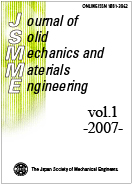Volume 1, Issue 7
Displaying 1-11 of 11 articles from this issue
- |<
- <
- 1
- >
- >|
Review
-
2007 Volume 1 Issue 7 Pages 827-841
Published: 2007
Released on J-STAGE: July 31, 2007
Download PDF (700K)
Papers
-
2007 Volume 1 Issue 7 Pages 842-853
Published: 2007
Released on J-STAGE: July 31, 2007
Download PDF (1176K) -
2007 Volume 1 Issue 7 Pages 854-863
Published: 2007
Released on J-STAGE: July 31, 2007
Download PDF (2285K) -
2007 Volume 1 Issue 7 Pages 864-874
Published: 2007
Released on J-STAGE: July 31, 2007
Download PDF (1477K) -
2007 Volume 1 Issue 7 Pages 875-885
Published: 2007
Released on J-STAGE: July 31, 2007
Download PDF (4794K) -
2007 Volume 1 Issue 7 Pages 886-894
Published: 2007
Released on J-STAGE: July 31, 2007
Download PDF (1013K) -
2007 Volume 1 Issue 7 Pages 895-906
Published: 2007
Released on J-STAGE: July 31, 2007
Download PDF (467K) -
2007 Volume 1 Issue 7 Pages 907-918
Published: 2007
Released on J-STAGE: July 31, 2007
Download PDF (1270K) -
2007 Volume 1 Issue 7 Pages 919-930
Published: 2007
Released on J-STAGE: July 31, 2007
Download PDF (429K) -
2007 Volume 1 Issue 7 Pages 931-937
Published: 2007
Released on J-STAGE: July 31, 2007
Download PDF (506K) -
2007 Volume 1 Issue 7 Pages 938-946
Published: 2007
Released on J-STAGE: July 31, 2007
Download PDF (577K)
- |<
- <
- 1
- >
- >|
